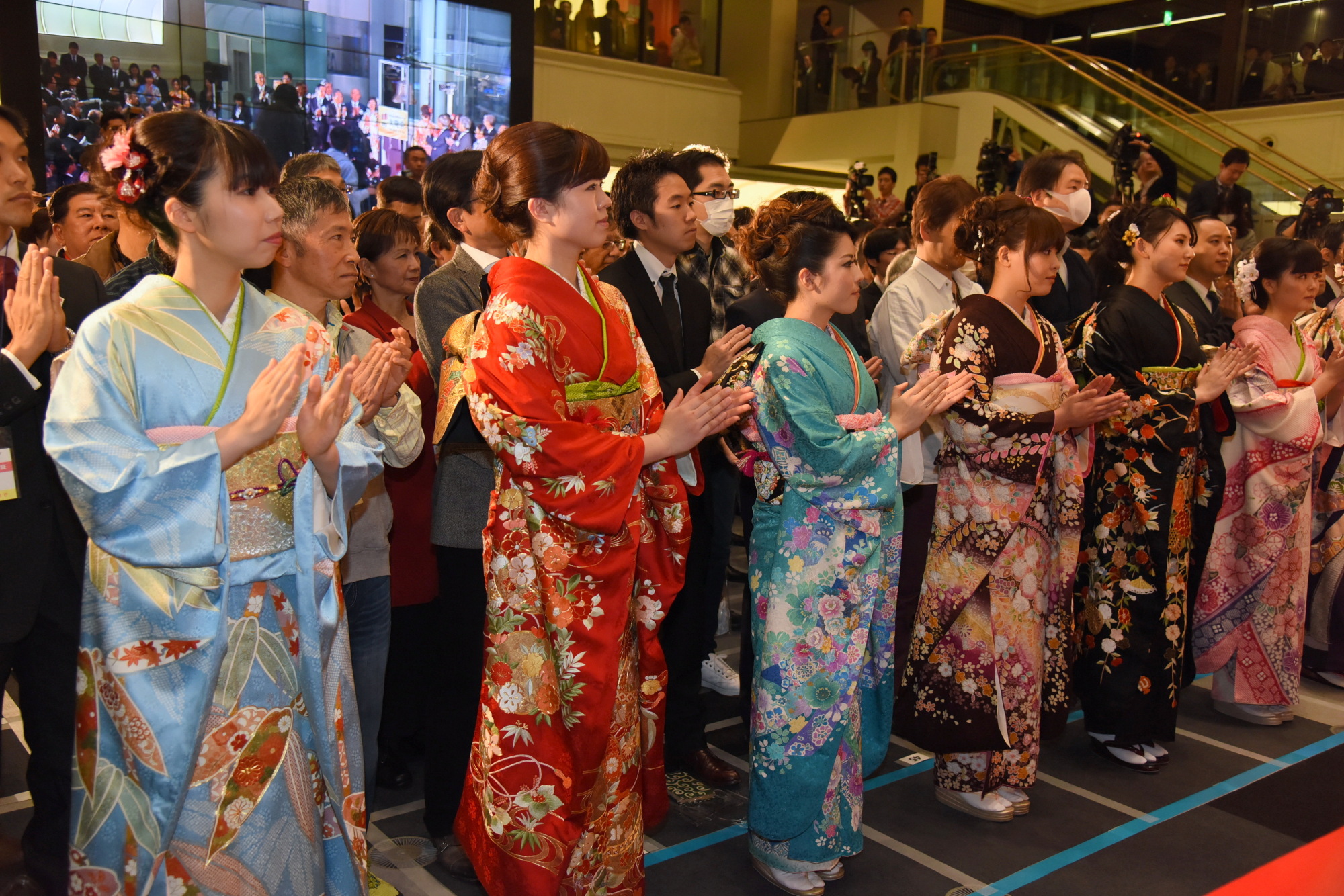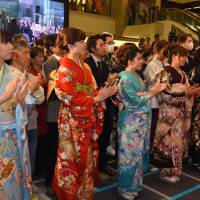Ten Japanese groups engaged in kimono-related activities Monday called on the government to apply to have waso, the technique for dressing in the traditional attire, put on UNESCO's Intangible Cultural Heritage list.
The Japan Kimono League, an organization aiming to protect kimono culture and promote their use in everyday life, and the Dainippon Silk Foundation are among the groups that made the request to Ryohei Miyata, commissioner of the Cultural Affairs Agency.
Previously, the agency had limited its selection criteria to items formally designated as national cultural heritage, including festivals and performing arts, when applying to the U.N. Educational, Scientific and Cultural Organization for Intangible Cultural Heritage status.
But the agency apparently changed course in late February after washoku (raditional Japanese cuisine), Belgian beer and yoga made the list.
The agency has since broadened its criteria to include waso, shodo (calligraphy), sado (the art of tea ceremony) and bonsai.
Few Japanese wear kimono in daily life, partly because they are expensive and difficult to put on. They are more often used to mark special occasions, such as weddings and graduation ceremonies.




